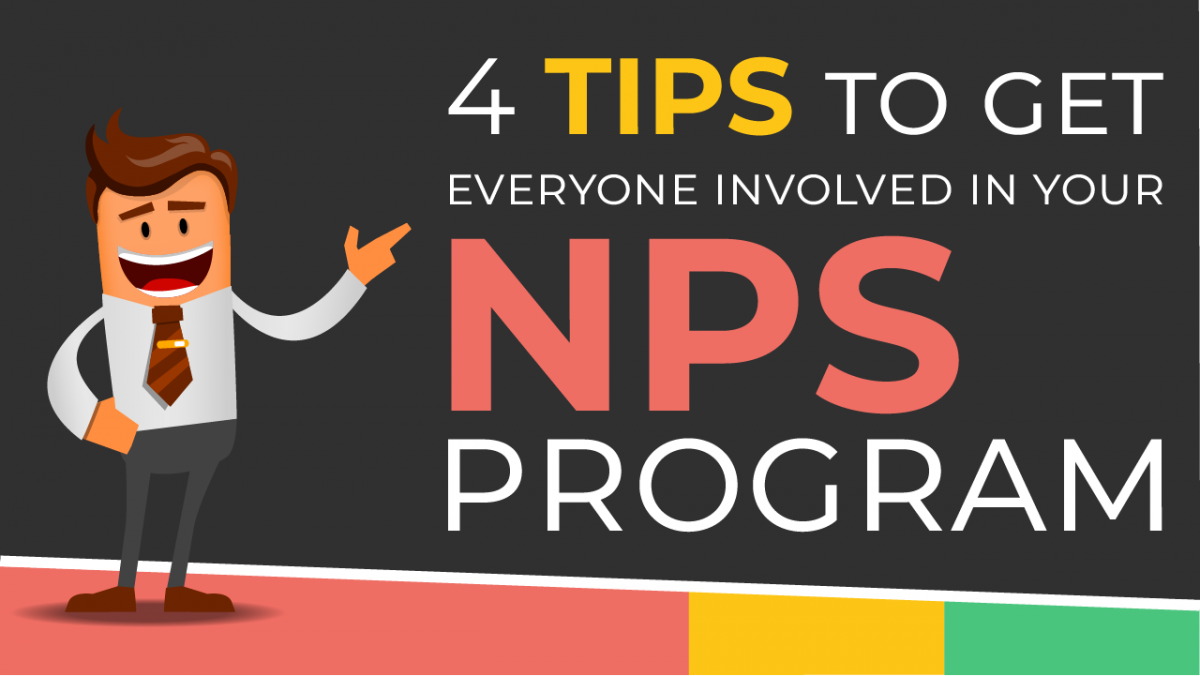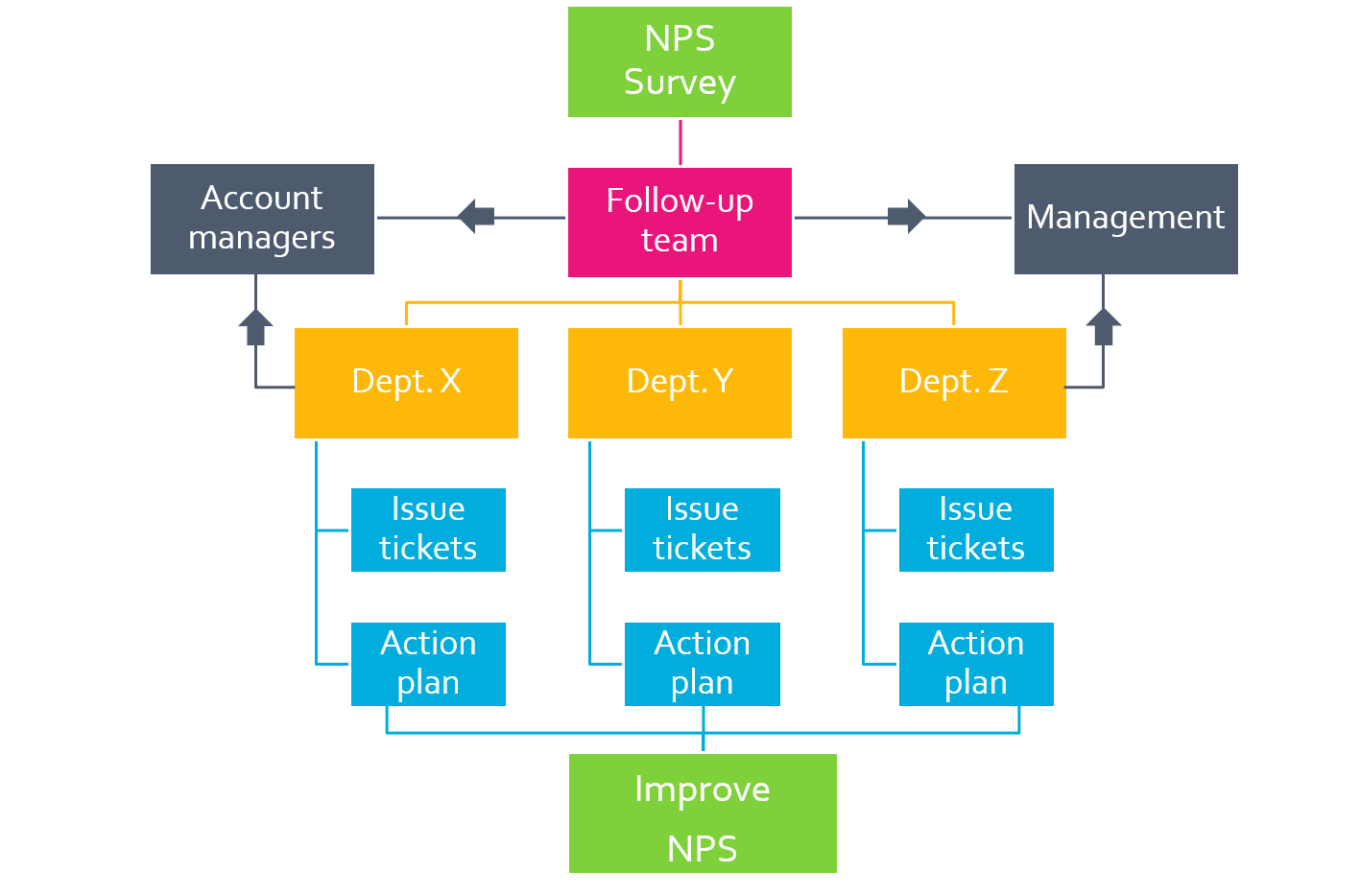As we all know, just measuring Net Promoter ScoreSM is not enough. The true goal of an Net Promoter Score program is to raise customer satisfaction which requires getting everyone in your organization involved. Just because the upper echelons of management decide that NPS is important, doesn’t automatically make it so for everybody.
Today, we give you 4 concrete tips you can apply immediately.
1. Make it relevant
It may be obvious to you what Net Promoter Score is and what it does. But most people in your organization have probably never heard of it. A good start is to explain Net Promoter Score in laymen terms: “NPS is a good reflection of whether people are happy with our products and service. The happier our customers are, the better the company will do and the better we will all do.”.
Okay, they know what NPS means, but that’s not enough. They need to understand their specific role. Make it relevant for their daily activities. They need to feel they can affect it is somehow. This a good opportunity to talk about how they need to think like the customers. Place themselves in the shoes of the customers.
Does everybody need to be involved? Simply, yes. It’s key everybody is aware of their importance in customer satisfaction. If your customer called your call center, whoever they got spoke with on the phone is, in their eyes, the representation of your company at that moment.
2. Get the right feedback to the right people
Now everybody in your organization knows why NPS is an important metric. But – literally – what can they do about it? In the example above with the call center; if operators can’t track their NPS, them realizing NPS is important, is not going to do much. Just like you are reading this article to get concrete tips to improve, they are looking for something concrete they can do. If they make a change, how would they know whether it helped or not? A good NPS program identifies issues that are dragging your NPS down and gets those issues to the right people in your organization that can do something about it. As issues are handled, they need to able to track their NPS to determine if the changes made a difference.
It has to be the right feedback. The car factory foreman can’t do anything about bad customer service and the call center reps can’t fix a jamming door. Only show them the feedback that is relevant in their day-to-day jobs. Set up follow-up teams per organizational unit. Feed them the issues for their unit only. Both bad and good! Positive comments from promoters is just as important. The goal is to amplify what you are doing right and minify what you are doing wrong.
3. Give them tools
Set up a ticketing system to track the issues. Assign each issue to someone who is responsible for fixing it. Set deadlines and have them report on their progress. Track the number of issues per team. Within a team, prioritize issue handling depending on the number times each issue is reported.
Visualize the NPS score progress in dashboards. A dashboard is connected to live data arranged on a single web page which is easy to access via internet or intranet. You can display these dashboards on monitors or place them on your intranet system where each team/department will have access to their personal dashboard and issue tracker.
4. Gamify your approach
I know it’s a buzzword for quite some time now, but it does really work for your Net Promoter Score program. You are already sending the right feedback to the right people. Putting a group/team/department in the spotlight, based on their efforts to increase customer satisfaction, does wonders for your program. You can, for example, set up an honor award system where teams/departments weekly aim for a goal and whoever reaches that goal first gets a reward. The reward doesn’t have to be a monetary value, and preferably isn’t. A pat on the back or positively putting someone in the spotlight works great as well (or even better). It keeps your people engaged and motivated by incorporating fun into the customer feedback program.
We have a bank client who takes the gamified approach to another level. A part of the branch manager’s bonus depends on their percentile in all the branch NPS scores. That takes gamification pretty far but it does show how important Net Promoter Score is.
Conclusion
- Make it relevant
- Get the right feedback to the right people
- Give them tools
- Gamify your approach to improve motivation
Net Promoter and NPS are registered service marks, and Net Promoter Score and Net Promoter System are service marks, of Bain & Company, Inc., Satmetrix Systems, Inc. and Fred Reichheld.
Check our NPS webinars
Related articles
- Learn everything about the the use, application and pitfalls of Net Promoter Score
- Set up an advanced Net Promoter Score feedback program:
the 4 stages of Net Promoter Score - Discover our built-in features for NPS on a single page
- We need an NPS-EU
- NPS clearly explained in 14 slides (Slideshare)
- Try a sample NPS survey
- Look at sample NPS survey results
(Password to access results: NPScore) - Use our NPS survey template


Laisser un commentaire